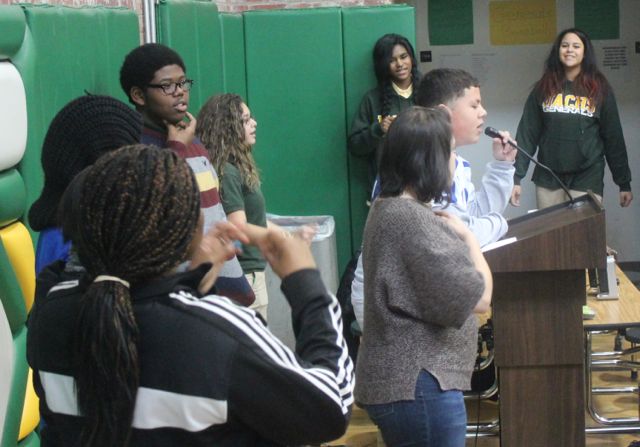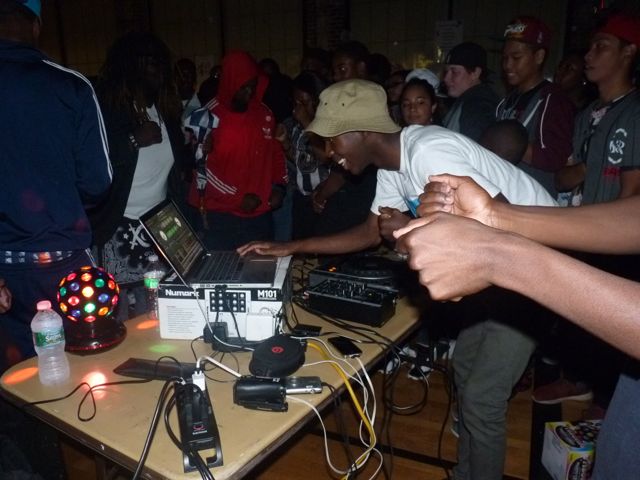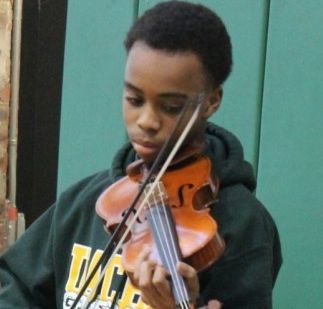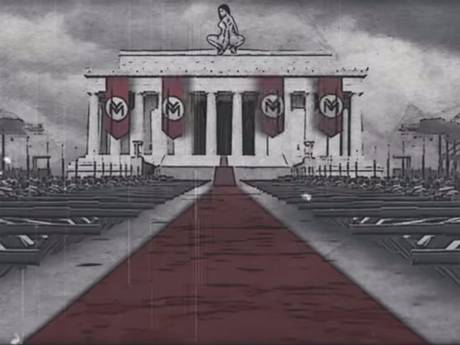Recording videos of fights can land a student in serious trouble, according to dean Erie Lugo. When a student is found recording videos of fights on school property or using school computers to upload the videos, it can lead to disciplinary action. However, if students engage in such actions outside school, there is little the school can do.
According to Lugo, the school has to “be careful” when it comes to disciplining students about their posts on their social networks.
“When it is not school-related, it is not our concern and we have no control over it,” Lugo said. “However, when [recording] happens on school grounds, and uploaded using school computers, we can take action.”
Under the First Amendment, citizens are given the right to freedom of speech and press. In other words, they are allowed to speak and publish freely whatever they please, unless it falls under the categories of obscenity or speech that directly encourages violence.
In the 1969 case of Tinker vs. Des Moines, student Mary Beth Tinker and her friends wore black armbands to school to protest the Vietnam War and to show respect and mourn for the dead. The school suspended them until the students agreed to take them off, but Tinker then sued the school, and the case went all the way to the U.S. Supreme Court.
The Supreme Court ruled that “the First Amendment applied to public schools, and school officials could not censor student speech unless it disrupted the education process,” according to the American Civil Liberties Union website.
“Unless it finds its way back to the school, it’s not our problem,” Lugo said. “However, when it causes trouble on school grounds, then we can do something.”
Senior Keisy Oviedo said that posting videos of fights can cause more drama and lead to cyberbullying because of the “harsh comments and spreading of the video.”
Multiple cases of cyberbullying have resulted in suicides in recent years. Individuals post hurtful comments and bully others behind the safety of a computer screen, believing that they can not be touched.
A recent case of cyberbullying resulted in the death of Felicia Garcia, a 15-year-old girl who committed suicide in Staten Island, N.Y., by jumping in front of a train. Garcia was bullied over rumors about her having sex with four football players, according to mailonline.com.
After a video was posted online, Garcia was bullied, which ultimately led to her last tweet saying, “I can’t, I’m done, I give up.” The following day she commited suicide, according to mailonline.com
Sophomore Emma Sanchez, who knew Garcia personally, was saddened by the loss. They went to P.S. 41 together during middle school and went out together.
“It was devastating,” Sanchez said. “It was someone I knew, and I remember going into the bathroom and crying. I was really surprised.”
According to the First Amendment, students have the right to post what they want on social media networks and should be able to do so without consequence. However, since cyberbullying can result in violence, it may not be protected by the First Amendment.
States have passed anti-cyberbullying laws, and social media networks have changed their policies to now ban users who are frequently reported for making hateful comments.
According to Facebook’s “Terms and Policies,” it does “not tolerate bullying or harassment.” The social media site also has strict rules when it comes to violence and threats against other users and hate speech. Facebook “protects First Amendment rights, but takes action on all reported behavior directed at private individuals.”
As of September 1, 2011, the state of New Jersey implemented some of the “toughest anti bullying legislation in the world,” according to intentious.com.
The law is designed to protect New Jersey students from bullying and intimidation from their peers both “inside and outside the classroom.”
According to Sameer Hinduja, Ph.D. and Justin W. Patchin, Ph.D. on cyberbullying.us, “Harassment, intimidation or bullying,” means any gesture, any written, verbal or physical act, or any electronic communication, that takes place on school property, on a school bus or off school grounds that “disrupts or interferes with the orderly operation of the school or the rights of other students.”
This legislation was put into action in response to the 2010 suicide of Tyler Clementi, a Rutgers University student who committed suicide shortly after his roommate secretly filmed him kissing another man in his dorm room.
Some students believe that those doing the recording should get in trouble for their actions because of the consequences when people post them on social networks.
Oviedo said that the person doing the recording should get the same punishment as the people who are fighting.
“The consequence should be a suspension, like the two that were fighting, because they cause fights too,” Oviedo said. “Everyone gets to laugh at them at their expense. Those people that are recording are just as wrong.”
Sophomore Averie Goden said it’s wrong to record videos and that people shouldn’t do it because of the power it has.
“It can lead to much bigger fights, people get laughed at and tormented,” Goden said. “All because someone had to record a fight that happened.”
Senior Jamil Colon said she thinks that the school should give equal suspensions to both parties.
However, sophomore Katharina Tirado said students should not get suspended for recording, depending on the circumstances.
“If they recorded it and gassed [the fight], and put it on Facebook, they should get suspended.” Tirado said. “But if they are just recording it, just to record it, no.”
With many teens having camera phones, such incidents have become common across the country.
In Rockdale County, Ga., an eighth grade student was given an in-school suspension for recording a video on his cellphone of two girls fighting on the school bus.
The student’s father, Samuel Dover, said he felt they were mistreated by the school district.
“They’ve really gone overboard,” Dover said.
Another incident was reported in Massachusetts at Lynn English High School, where 27 students were suspended February 20, 2012, for their involvement in the recording of a fight between two girls, which was then posted on the Internet.
The two girls in the fight were suspended for five days, while each of the five girls who recorded it were suspended for three days. The rest of the girls suspended were commentors and instigators through social media networks.
“I’m astonished that nobody would step up to stop it,” principal Thomas Strangie said. “They all had cell phones. Any one of them could have called police. It’s sad.”
According to Tirado, the school should not be “worried” about students’ pages on social media websites.
“They should only worry if the person who was in the video says something and reports it,” Tirado said. “Most of the time, they post their own fights up to get likes for themselves, which isn’t cool. If the student doesn’t care, then the school should not either.”
Categories:
Recording fights holds serious consequences
February 19, 2013
Story continues below advertisement
6




